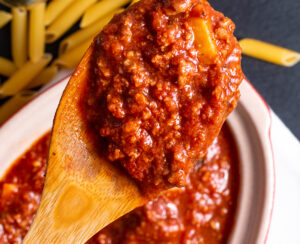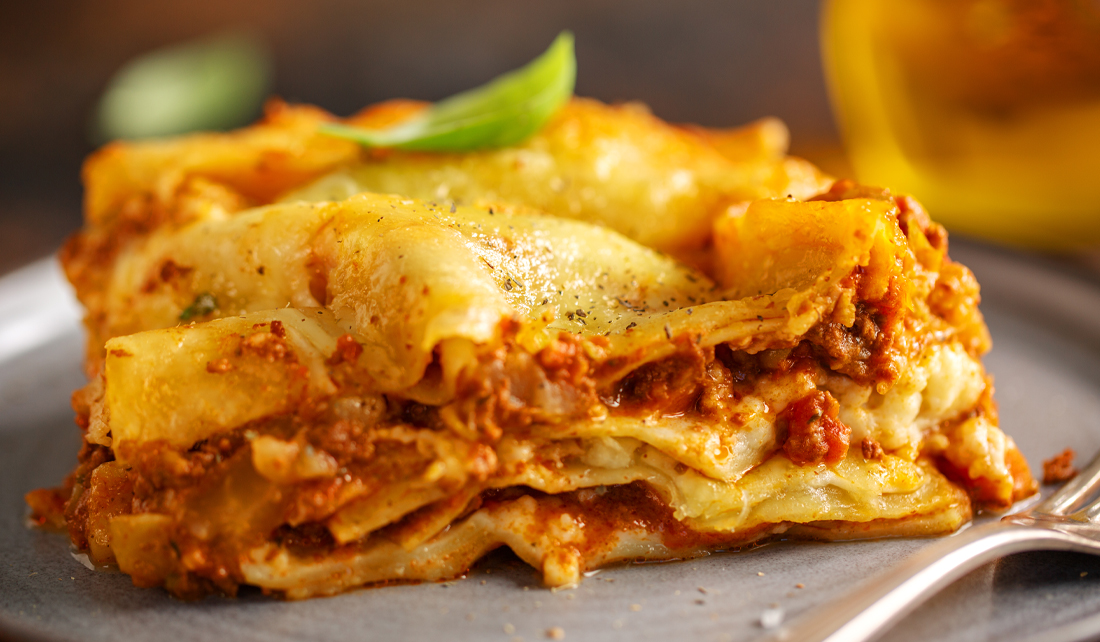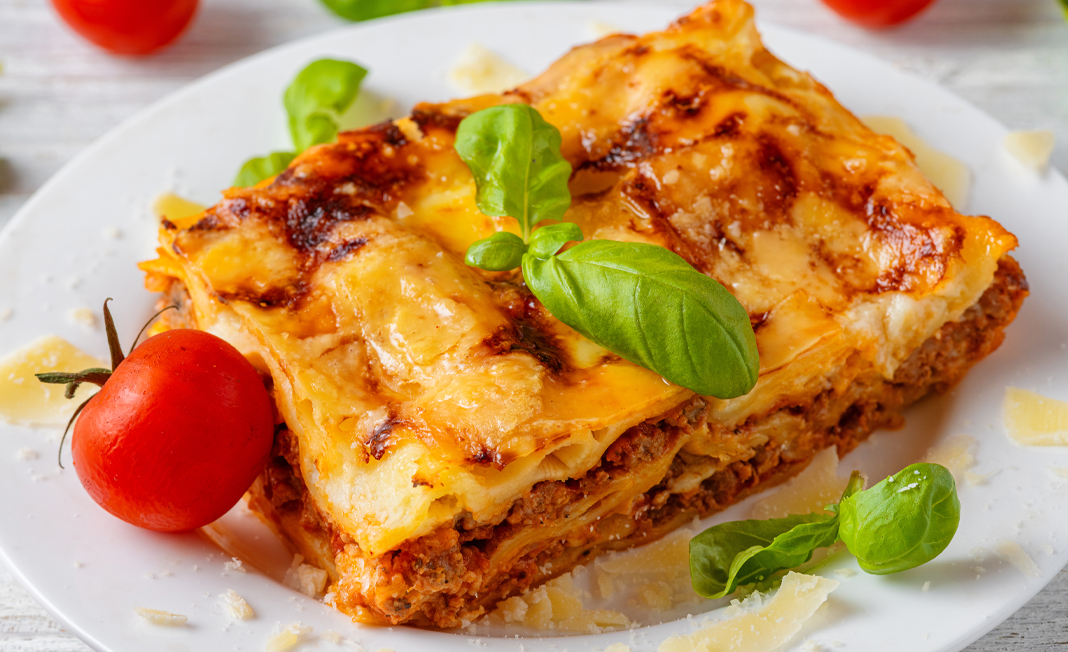Tuscan Lasagna: A Dish Rich in Tradition
Tuscan lasagna is a dish steeped in tradition, beloved for its simplicity but also for its intense flavors and the rich history it carries. Although lasagna in Italy is generally associated with the Emilia-Romagna region (especially with Bolognese lasagna), Tuscany has its own unique version, which may vary slightly from area to area, but always with fresh, local ingredients.
Lasagna in Tuscany: A Rustic and Simple Delight
When you think of Tuscan lasagna, you immediately imagine a dish full of history and authentic flavors. Lasagna is a dish that, while typical of Italian cuisine in general, finds one of its most delicious and rustic interpretations in Tuscany. It is a dish that carries with it the warmth of tradition and the love for the land, a true symbol of Tuscan cooking.
In Tuscany, lasagna is made with fresh homemade egg pasta, alternated with a rich ragù. One of the distinctive features of Tuscan lasagna is the use of a rich ragù, which is prepared with tomatoes, red wine, and meat that is often slow-cooked for many hours, making it tender and full of flavor. This dish also stands out for its use of homemade béchamel, which enriches each layer and gives the lasagna an irresistible creaminess.
Regional Variations
Depending on the area of Tuscany, lasagna can be prepared with different nuances. In rural areas, for example, you might find lasagna made with porcini mushrooms and local cheeses like pecorino. In some areas, you may also find versions enriched with seasonal vegetables such as zucchini, artichokes, or spinach, adding freshness and lightness to the dish.
The Tuscan version has an even rustic variant, which may include wild boar, chicken, or lamb—ingredients commonly found in Tuscan cuisine.
Another interesting element is that Tuscan lasagna is often prepared for special occasions such as holiday lunches, weddings, or birthdays, and it carries with it the meaning of sharing and family, values deeply rooted in Tuscan culture.
The Origins of Lasagna: A Journey Through History
The origins of lasagna date back to very ancient times, long before it became the version we know and love today. It is believed that the word “lasagna” comes from the Greek term “Laganon”, which referred to a type of flat pasta. The ancient Romans, in fact, prepared a dish similar to lasagna, consisting of layers of pasta and sauces. Over the centuries, this dish evolved in form but kept its essence intact: a combination of pasta, sauce, and cheese.
During the Middle Ages, lasagna spread across Europe and began to vary according to local traditions. In Tuscany, as in other Italian regions, it was enriched with regional ingredients such as meat ragù, homemade béchamel, and the ever-present fresh egg pasta.

Lasagna and History: A Connection with the Land
The story of Tuscan lasagna is deeply intertwined with the history of the region itself. Tuscan peasant cooking has always been focused on sustainability and the use of local ingredients. The preparation of dishes like lasagna, which require time and care, reflects the deep bond with the land that the people of Tuscany have always had. Each ingredient has a meaning and a story, just like the land that produces it.
A plate of lasagna is not just food, but also a symbol of Tuscan hospitality. When a guest comes to the home, a homemade lasagna represents a way to show affection, offering the best of local tradition and cuisine.
Lasagna as a Community Dish
One of the beauties of Tuscan lasagna is that it is not just a dish, but a true community ritual. The preparation is often a collective effort: friends and families gather to make the fresh pasta, prepare the ragù, layer the ingredients, and then bake the dish for several hours. This is a tradition passed down from generation to generation, with each family adding its own personal touch.
Tuscan Lasagna: A Journey Through Flavors and Memories
Tuscan lasagna, like many other traditional recipes, is a dish that tells a story of love for the land and the kitchen. Every layer of pasta, every spoonful of ragù, is infused with the passion for the Tuscan land that has been passed down through generations. And, as the writer Giovanni Verga once said, Tuscany is a land that leaves its mark on the soul of those who love it, and through dishes like lasagna, it makes you feel part of an ancient, timeless story.
Conclusion: Lasagna, A Dish to Live and Share
Tuscan lasagna is not just a dish to enjoy but an experience to live. It’s a plate that invites you to pause, savor every bite, and remember that Tuscan cuisine is made of care, authenticity, and history. A dish that, like Tuscany itself, never fails to surprise, with its intense flavors and traditions that speak of a land with deep roots and an open heart to all who wish to discover it.

Tuscany Lasagna Recipe
Ingredients for 6 servings:
- For the pasta (if homemade):
- 400 g of all-purpose flour (type 00)
- 4 eggs
- For the Tuscan ragù:
- 500 g of ground beef
- 250 g of ground pork
- 1 onion
- 2 carrots
- 1 celery stalk
- 2 garlic cloves
- 1 glass of red wine (preferably Tuscan)
- 500 g of canned peeled tomatoes
- 3 tablespoons of tomato paste
- Extra virgin olive oil
- Salt and pepper to taste
- For the béchamel:
- 50 g of butter
- 50 g of flour
- 500 ml of milk
- Salt and nutmeg to taste
- For assembling:
- 200 g of grated Parmesan cheese
- 100 g of Pecorino Toscano (optional, but great for adding a rich flavor)
Preparation:
1. Prepare the pasta:
If you decide to make the fresh pasta from scratch:
- Arrange the flour in a mound on a work surface, creating a well in the center.
- Crack the eggs into the well and begin mixing with a fork, gradually incorporating the flour.
- Knead the dough until it’s smooth and homogeneous. Cover it with a damp cloth and let it rest for about 30 minutes.
- Roll the dough into thin sheets using a rolling pin or pasta machine. Cut the sheets into the desired shape for lasagna.
2. Prepare the Tuscan ragù:
- In a large pot, sauté the finely chopped onion, carrots, celery, and garlic with a drizzle of olive oil.
- Add the ground beef and pork and brown them well.
- Pour in the red wine and let it evaporate.
- Add the crushed canned tomatoes, tomato paste, salt, pepper, and, if desired, a few sprigs of rosemary and bay leaves.
- Cover and cook on low heat for about 2 hours, stirring occasionally. The ragù should become thick and flavorful.
3. Prepare the béchamel:
- In a saucepan, melt the butter over low heat. Add the flour and stir well to form a roux (a paste).
- Gradually add the warm milk, stirring continuously to avoid lumps.
- Continue cooking until you achieve a thick creamy consistency. Add salt and a pinch of nutmeg to taste.
4. Assemble the lasagna:
- Preheat the oven to 180°C (350°F).
- Cook the pasta sheets in boiling salted water for 2-3 minutes, then drain them and quickly cool them in cold water.
- In a baking dish, spread a layer of ragù on the bottom.
- Add a sheet of pasta, then a layer of ragù, a spoonful of béchamel, and a sprinkle of grated cheese (Parmesan and Pecorino).
- Repeat the process, alternating layers of pasta, ragù, béchamel, and cheese until all the ingredients are used.
- Finish with a final layer of pasta, béchamel, and plenty of Parmesan cheese on top.
5. Bake and serve:
- Bake the lasagna for about 30-40 minutes, until the top becomes golden and crispy.
- Let the lasagna rest for a few minutes before serving, allowing the flavors to meld together.
Suggestions:
- If you prefer a richer version, you can add porcini mushrooms to the ragù or use wild boar meat for a more rustic touch.
- You can prepare the lasagna in advance and store it in the refrigerator overnight; the flavor will be even more intense the next day.
Bon Appetito!


